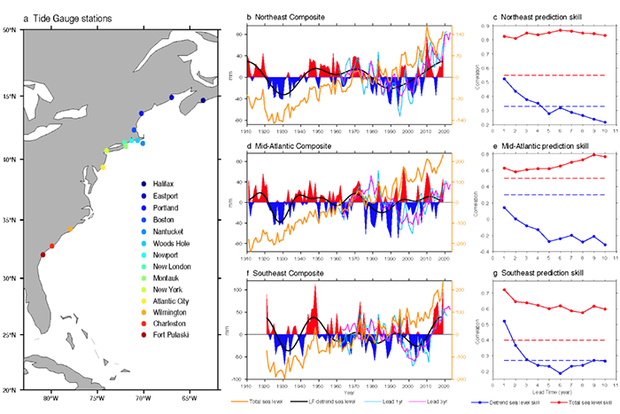Skillful multiyear to decadal predictions of sea level in the North Atlantic Ocean and U.S. East Coast

Sea level multiyear to decadal prediction skill along the U.S. East Coast. Credit: doi:10.1038/s43247-023-01093-w

Sea level multiyear to decadal prediction skill along the U.S. East Coast. Credit: doi:10.1038/s43247-023-01093-w
The occurrence of exceptionally high sea levels can cause severe coastal flooding and inundation, threatening lives and infrastructure in the coastal regions. High sea level also alters the coastal environment, moving barrier islands and cutting channels through them, impacting forests and crops, inundating the coastline with salt water, and damaging habitats essential to support wildlife.
The authors use observations and climate model predictions to show that sea level variations along the U.S. East Coast are skillfully predictable 3 to 10 years in advance. The most predictable component of sea level is a basin-scale upward trend, predictable a decade in advance and primarily a response to increasing greenhouse gases.
Significant additional predictability comes from multidecadal variations of the Atlantic Meridional Overturning Circulation (AMOC). While perfect model simulations show AMOC-related sea level predictability of 5-7 years, model biases and initialization uncertainties reduce the realized predictive skill to 3-5 years, depending on location. Overall, greenhouse gas warming and predictable AMOC variations lead to multiyear to decadal prediction skill for sea level along the U.S. East Coast. Such skills could have significant societal benefits for planning and adaptation.